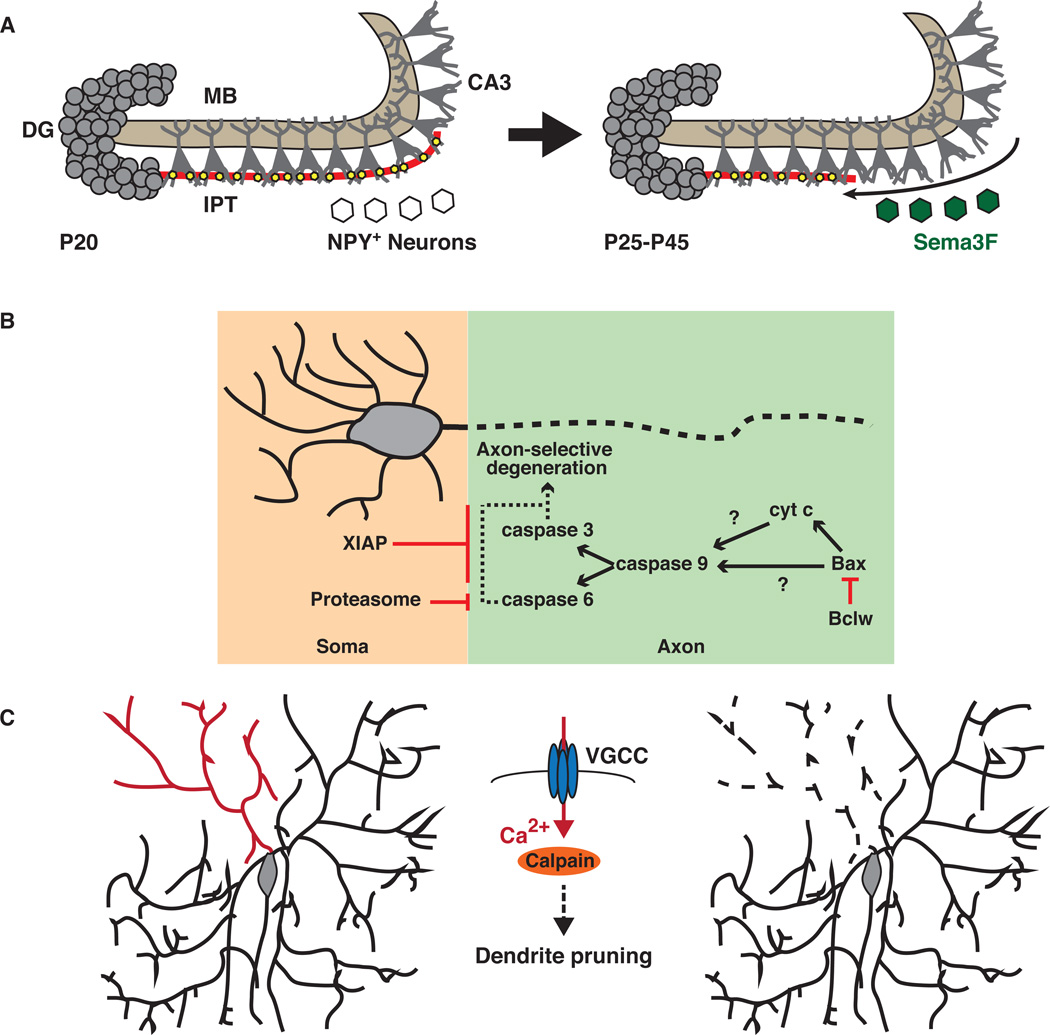Figure 3.
Spatiotemporal control of pruning. Three examples of spatiotemporal control strategies are presented. (a) Expression of the axonal repellent Sema3F (green) commences at P25 and is restricted to neuropeptide Y (NPY)+ interneurons in the infrapyramidal region, resulting in pruning of the infrapyramidal tract (IPT) alone while sparing the main bundle (MB) of the mossy fibers. (b) Caspase-dependent signaling is regulated at multiple levels so as to restrict its activity to the degenerating axon (blue box) without triggering cell death or dendritic pruning (yellow box). (c) Calcium influx in specific dendritic branches acts as a spatial and temporal cue to trigger pruning in Drosophila. Intrinsic excitability increases locally, activating calcium influx via voltage-gated calcium channels (VGCCs), which results in the activation of the calcium-activated protease calpain. Abbreviations: CA3, cornu ammonis 3; DG, dentate gyrus.

